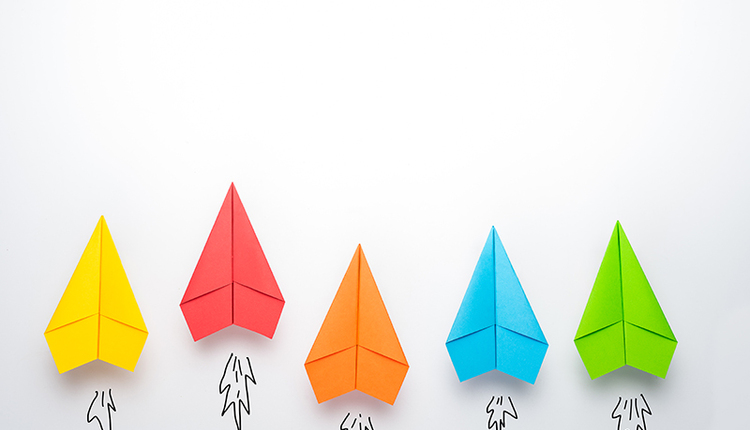I can't tell you how many times I have walked into a warehouse and heard the magic words, "I'm out of space." However, what they are really saying is "I'm out of locations" — they just don't see it from that aspect. Since the nature of humans (especially those who work in warehouses) seems to fill all empty space... space mysteriously disappears.
There are a number of strategies you can follow to generate or reclaim space. The obvious is to build or find and move into more space. As a general rule of thumb, this should be the last resort. Let's first look at some other options which do require a little bit of work (doesn't anything worth achieving ;-)
A Few Space Saving Methods Include:
1. Eliminate old inventory - The real cost of dead inventory occupying live warehouse space is a subject for another discussion, but if your CFO starts to tell you about you already own it and doesn't want to write it off... give us a call... he's very wrong! Most companies calculate the carrying cost an inventory item between 18 — 25% of its value annually. The short answer is that it's costing you a ton! But we will discuss this another day.
2. Use equipment to optimize vertical space - I've hit on this subject before and figure I won't beat that drum right now. Please visit my earlier blog to read about this. Click here.
3. Optimize your existing storage systems - This is the ticket for today. Looking at your existing equipment and systems and setting up a system to optimize space and improve your productivity.
Finding the Waste
Looking at your rack and shelving systems. How much space is there between the top of each box or tote and the shelf above? Often over 60%! Then look at each shelf and see how many boxes or totes have various heights. The heights will likely vary by 80%+. If you use shelf bins (plastic, cardboard, etc•) to house inventory, how much space is not being used within the bins. Many times these bins are 90% air with a couple of items laying in it. In other words the bin is taking 100% of its allocated space on the shelf, but the item is actually only using 10% of that DEDICATED space
This is totally wasted space. To create a method to wrangle this wasted space out of a system, we will use cell sizes to optimize the space. We start with a survey to determine where we are. Most inventory in a specific area can be generalized into groupings. Experience says, the more common the inventory type, the more commonality. Often seven different size cells can be used to optimize a cell or area. The fewer the better, but you are trying to save space so you need to be the judge of your cube optimization.
Using Software & Cells to Save Space
Now depending on how sophisticated or simple your warehouse is will determine the implementation. If you have a WMS, WCS or inventory management software or module often there is a built in method to store and track each SKU and it's physical size. You can use this feature to designate a cell size. If you are not sure what I'm talking about when I say cell, think of it as a tote or box. Each cell has a length, width and depth/height.
With a WMS, WCS or inventory management software you can assign every specific SKU to a cell size based on its physical characteristics and quantity on hand in that position.
If you have this software and haven't turned on these features, turn them on and or get someone like the software creator or integrator to work with you to turn this on. Likewise, invest in a Cubiscan . This device integrates into your software. You scan an items bar code, then place it on the platform, click a mouse and the system automatically registers its dimensions (length, width, height, and weight) using sonars and populates the information into the database to be used going forward for that SKU. Once you have the size you designate the cell size. Now during replenishment periods, your system will always use that size cell and optimize your storage system.
Stay tuned for part 2!
There are a number of strategies you can follow to generate or reclaim space. The obvious is to build or find and move into more space. As a general rule of thumb, this should be the last resort. Let's first look at some other options which do require a little bit of work (doesn't anything worth achieving ;-)
A Few Space Saving Methods Include:
1. Eliminate old inventory - The real cost of dead inventory occupying live warehouse space is a subject for another discussion, but if your CFO starts to tell you about you already own it and doesn't want to write it off... give us a call... he's very wrong! Most companies calculate the carrying cost an inventory item between 18 — 25% of its value annually. The short answer is that it's costing you a ton! But we will discuss this another day.
2. Use equipment to optimize vertical space - I've hit on this subject before and figure I won't beat that drum right now. Please visit my earlier blog to read about this. Click here.
3. Optimize your existing storage systems - This is the ticket for today. Looking at your existing equipment and systems and setting up a system to optimize space and improve your productivity.
Finding the Waste
Looking at your rack and shelving systems. How much space is there between the top of each box or tote and the shelf above? Often over 60%! Then look at each shelf and see how many boxes or totes have various heights. The heights will likely vary by 80%+. If you use shelf bins (plastic, cardboard, etc•) to house inventory, how much space is not being used within the bins. Many times these bins are 90% air with a couple of items laying in it. In other words the bin is taking 100% of its allocated space on the shelf, but the item is actually only using 10% of that DEDICATED space
This is totally wasted space. To create a method to wrangle this wasted space out of a system, we will use cell sizes to optimize the space. We start with a survey to determine where we are. Most inventory in a specific area can be generalized into groupings. Experience says, the more common the inventory type, the more commonality. Often seven different size cells can be used to optimize a cell or area. The fewer the better, but you are trying to save space so you need to be the judge of your cube optimization.
Using Software & Cells to Save Space
Now depending on how sophisticated or simple your warehouse is will determine the implementation. If you have a WMS, WCS or inventory management software or module often there is a built in method to store and track each SKU and it's physical size. You can use this feature to designate a cell size. If you are not sure what I'm talking about when I say cell, think of it as a tote or box. Each cell has a length, width and depth/height.
With a WMS, WCS or inventory management software you can assign every specific SKU to a cell size based on its physical characteristics and quantity on hand in that position.
If you have this software and haven't turned on these features, turn them on and or get someone like the software creator or integrator to work with you to turn this on. Likewise, invest in a Cubiscan . This device integrates into your software. You scan an items bar code, then place it on the platform, click a mouse and the system automatically registers its dimensions (length, width, height, and weight) using sonars and populates the information into the database to be used going forward for that SKU. Once you have the size you designate the cell size. Now during replenishment periods, your system will always use that size cell and optimize your storage system.
Stay tuned for part 2!
Ed Romaine is the CMO-VP Marketing for Integrated Systems Design - ISD, which provides consulting and integration of cost effective automated order picking, packing and shipping systems for warehouses, distribution centers and manufacturers. He can be reached atedromaine@isddd.com or 215-431-4524 . Visit www.ISDDD.com orhttps://plus.google.com/+EdRomaine.











